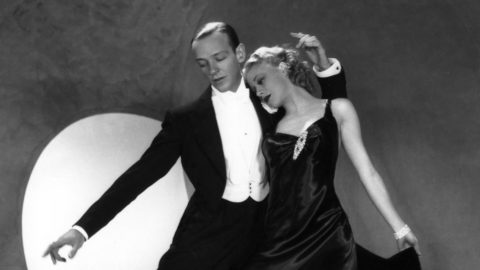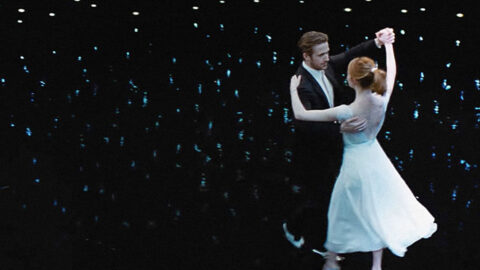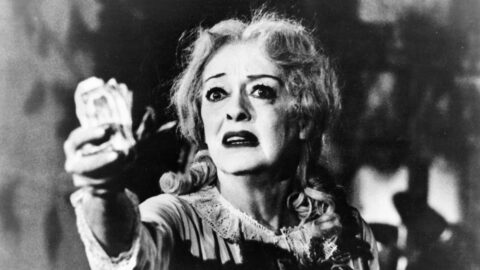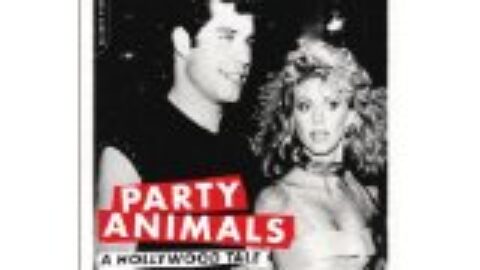Deep Focus: Fred & Ginger
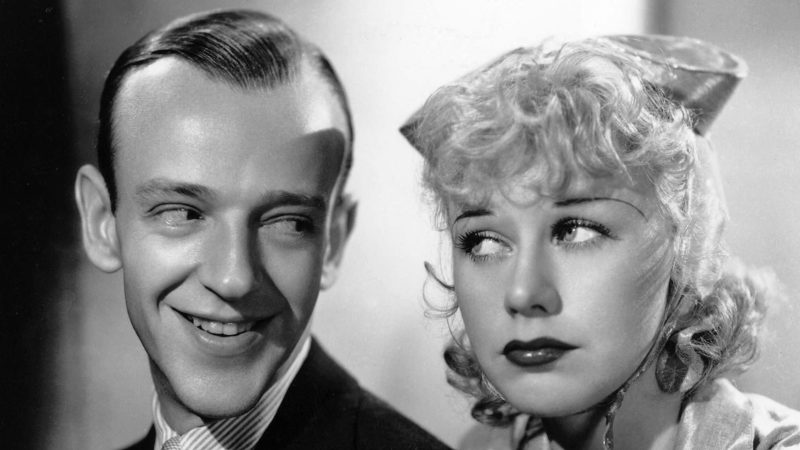
Flying Down to Rio
Audiences knew them as Fred and Ginger. Critics call the work they did together on the ten films in the complete retrospective Fred & Ginger (running this weekend at the Film Society of Lincoln Center), “the Astaire-Rogers musicals,” out of love and respect for two stars who, with romantic transport and zesty comedy, transformed cinematic song and dance on the RKO lot—no matter who sat in the director’s chairs or wrote the scripts. They did it even when they were mere supporting characters, as in their first film, Flying Down to Rio (1933), or even if the screenplay threw the main love story to Randolph Scott and Irene Dunne in Roberta (1935) or to Scott and the energy-draining Harriet Hilliard (who had just married bandleader Ozzie Nelson) in Follow the Fleet (1936). Astaire and Rogers lit up the movies of the thirties and now provide luminous inspiration as a creative marriage of equals. Seeing their dances afresh restores meaning to the word “dazzling.”
Their masterful choreography anchors some very clever and very American movies. The films fashion their own ebullient subgenre by lampooning melodramas, weepies, drawing-room comedies, high-flown romances, and more conventional musicals. We’re in on the game as the filmmakers manipulate stock devices in novel ways from film to film. Mistaken identities threaten to derail the Rogers-Astaire romance in The Gay Divorcee (1934), Top Hat (1935), and the final act of The Barkleys of Broadway (1949). Money must be made and debts settled before everyone lives happily ever after in Follow the Fleet and Swing Time (1936). The stars burlesque European pretensions when Lillie Glatz (Rogers) pretends to be Poland’s “Countess Scharwenka” in Roberta (1935), and Peter P. Peters (Astaire) assumes the persona of Russian ballet star “Petrov” in Shall We Dance (1937).
Of these ten films, Mark Sandrich’s scintillating Top Hat is my top pick. George Stevens’s affecting Swing Time, featuring Rogers at her personal best, is close on its tails. Follow the Fleet, Sandrich’s rambunctious and vivacious anti-Top Hat, comes in third, followed by his vain but glorious effort to top Top Hat in Shall We Dance. In the middle of the pack, William A. Seiter’s rarely revived Roberta turns out to be a lyrical jeu d’esprit about Americans in Paris, and Thornton Freeland’s Flying Down to Rio is the zaniest Busby Berkeley extravaganza Berkeley never made. Even the lesser films have their charms, like Astaire’s great “Shoes with Wings” in The Barkleys of Broadway, his and Rogers’s Technicolor MGM reunion. And it’s piquant to see Sandrich try to put a psychiatric spin on the screwball comedy in Carefree (1938).
The smug shrink Astaire plays in Carefree would call Sandrich’s most lavish imagery part of our collective impulse to “escape reality”—but they intersect with reality precisely because they invade our fantasy lives. In his autobiography, Backing into Forward (2010), Jules Feiffer wrote that when he sailed to London on the Queen Elizabeth in 1959, “I strolled the deck with Gershwin music in my head, just as Astaire does in Shall We Dance.” In other words, he became part of what the critic-novelist Wilfrid Sheed once called Astaire’s “take-out aristocracy of fantasy.”
Of course, the genius direction in these movies always came from Astaire, who proved that groundbreaking American invention could be simultaneously progressive and conservative. “In the old days,” he explained, “they used to cut up all the dances on the screen. In the middle of a sequence, they would show you a close-up of the actor’s face, or of his feet, insert trick angles taken from the floor, the ceiling, through latticework or a maze of fancy shadows. The result was that the dance had no continuity. The audience was far more conscious of the camera than of the dance. And no matter how effective the trick angles and cock-eyed shots might have been in themselves, they destroyed the flow of the dance—a factor that is just as important on the screen as on the stage.” So he insisted that he and Rogers perform their dances to perfection in long, unbroken takes.
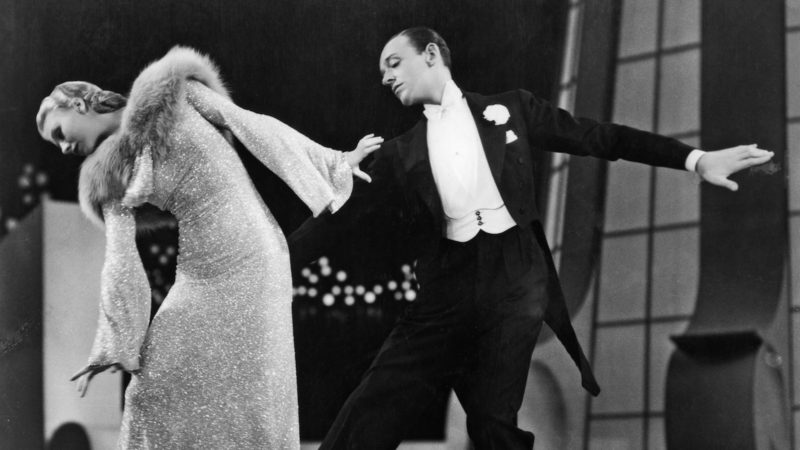
Follow the Fleet
This method engulfs us in the duets’ syncopated steps, rocketing taps, and swooping glides, and the ecstatic point and counterpoint of dance and melody. Knowing the camera would catch his every nuance, Astaire choreographed seductive, buoyant arcs of resistance and attraction, building to climaxes of searing poignancy or bliss. Top Hat’s “Isn’t It a Lovely Day (to be Caught in the Rain)” is my favorite number, not just because it’s full of happiness and mischief but also because it celebrates romance between equals. At the start of this marvelously swift and inventive movie, Astaire, a total stranger to Rogers, wakes her when he tap-dances in the hotel room above hers, then charms her with his explanation and restores her sleep with a sand dance. The next morning, he commandeers the hansom cab that takes her to Hyde Park for a horseback ride. A thunderstorm breaks out; she shelters in a bandstand. He seizes the opportunity. As the rain comes down they sit together in a medium two-shot, both faces to the camera, and she smiles as he sings, “Long as I can be with you, it’s a lovely day.” The only cut gives us a fuller shot of the gazebo as the camera follows Astaire and he saunters into a dance. Rogers joins him while his back is turned, delighting him. She matches his twirls and taps with her own spiffy, rat-a-tat-tat rotation. Then she jolts the number into higher gear. As they stroll back toward the bandstand seats, she takes an odd, sudden hop, kicks her ankles together, and executes her own tap combination. From that moment on they move in ever sweeter and faster synchronicity. They ultimately twirl in each other’s arms, creating one ecstatic moment after another. Astaire lifts and glides her around his body—and Rogers lifts and glides his body around hers. The ending is all smiles, for them and for the audience.
Astaire’s method works equally well for his solos, including one aggressive, rackety set in the pair’s touching biopic and final RKO film, The Story of Vernon and Irene Castle (1939). As Vernon, Astaire performs a British music-hall song with a loose-legged strut that recalls James Cagney as George M. Cohan and reveals their shared vaudevillian heritage. In their own ways, Astaire and Rogers, too, were Yankee Doodle Dandies—“American folk dancers,” Arlene Croce calls them.
Once accustomed to their sparkle, we appreciate the instinct and intricacy that went into each number. There’s always something to discover. In the prelude to their first romantic sensation, “Night and Day” (in The Gay Divorcee), Astaire pursues Rogers across an empty dance floor, cutting off her attempts to exit. Then, his face still hopeful, he grabs her wrist and kicks his right leg back while his left leg abruptly snaps into place and quivers. It’s a piece of action poetry that fully visualizes his pleading—and it’s the perfect setup for a duet of push-pull seduction.
In their proper movie settings, even dances familiar from clips retain the power to surprise. In “Let’s Face the Music and Dance,” two well-dressed near-suicides (Astaire a ruined gambler, Rogers a woman of mystery) conjure a devastating, melancholy passion on the terrace of a Monte Carlo casino. It’s their most elevated, high-style duet—and I’d completely forgotten that it’s the climax of Follow the Fleet, their most proudly proletarian movie, with Astaire and Scott as sailors on shore leave in San Francisco and Rogers as an entertainer at a taxi-dance joint named, ironically, “Paradise Ballroom.” (“Let’s Face the Music…” is the big number in a fund-raising show set on a boat.)
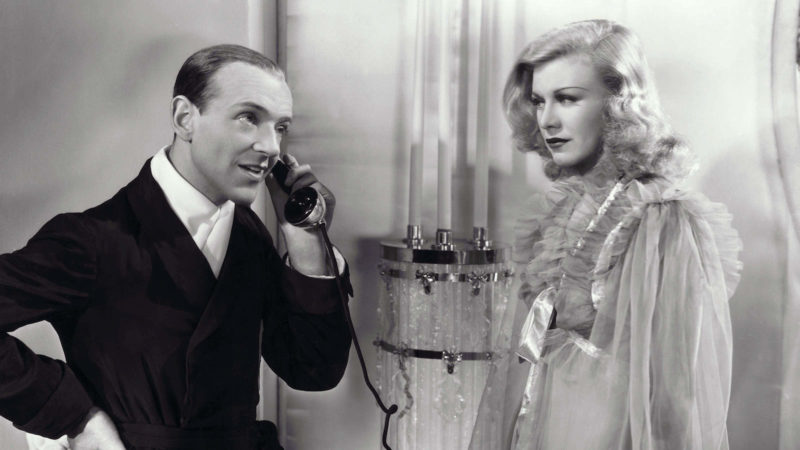
Shall We Dance
Astaire’s older sister Adele had broken up their legendary Broadway dance team when she married Lord Charles Cavendish in 1932. But in effect, Astaire and Rogers and the premier songwriters of their era forged a brash, stylish new peerage of talent. Throughout the Astaire-Rogers musicals, and especially in spirited high points like Follow the Fleet and Swing Time (he’s a gambler and she’s a dance instructor), they embody the belief that gumption, humor, grace, and breakneck artistry are enough to pull anyone out of personal or national depressions. (Both films came out in the first year of FDR’s second term.)
“Mine is a plebeian style, his is an aristocratic one,” the equally great and acrobatic Gene Kelly once said of Astaire. Like the animators in the psychedelic Beatles cartoon Yellow Submarine, who portray them swirling to “Lucy in the Sky With Diamonds,” we do think of the couple as glamour personified: Rogers kicks up her heels in flouncy gowns and Astaire swings her around in the tuxedo with tails he wore onscreen since his debut in the Joan Crawford/Clark Gable vehicle Dancing Lady (1933). In Astaire and Rogers’s black-and-white wonders, they always show the grit that produces the pearly sheen.
In their posh Big White Set (BWS) movies, Top Hat and Shall We Dance, Astaire actually plays star dancers while she’s a smart-set model (in the former) and a famous singer-dancer (in the latter). But Astaire is always leveraging or charging expenses to his panicky producer or impresario—the uproariously rattled Edward Everett Horton. In The Gay Divorcee, Horton is Astaire’s incompetent lawyer, and Astaire, already world-renowned, must dance for their supper in a Paris restaurant.
Most of these films pulse with work-centered backstage farce. From auditions, rehearsals, and makeup straight through to curtain calls and after-parties, they present a stylized, vigorous image of entertainers’ lives and talents streaming in and out of the wings and the stage door. Follow the Fleet predates Mickey Rooney and Judy Garland’s Babes in Arms by three years as a key “let’s-put-on-a-show” movie. In Carefree, Rogers, as a singer getting treatment from Astaire’s high-society shrink, sparks a show-biz crisis when, under hypnosis, she insults her radio sponsor. Like the greatest screwball comedies, these musical comedies make café society feel energetic and accessible without stripping away its luster.
Astaire was the son of an Austrian immigrant beer salesman in Omaha, Nebraska, Rogers the daughter of a single working mother in Independence, Missouri. So is it any wonder they brought fresh attitude to deluxe artifice, easy living, and fine romance? They do several of their best-loved pas de deux in unpretentious locations, like a Central Park rotunda (“Let’s Call the Whole Thing Off,” Shall We Dance) or a dance-school floor (“Pick Yourself Up,” Swing Time). If you can dance at all, these are the ultimate date movies, because Rogers and Astaire’s deep rapport as dancers is what tell us, and them, that they’re made for each other. And watching them, even non-dancers can dream.
The hopeful innocence and generosity of these movies extend to its silliest characters. Horton partners sprightly young Betty Grable in a Gay Divorcee novelty number, “Lets K-nock K-nees.” Later that same film, Eric Blore, the ultimate fubsy waiter (or, in other films, valet or hotel manager), blithely saunters up some stairs to the music of “The Continental.” Erik Rhodes as Rodolfo Tonetti (“You’re safe with Tonetti, he prefers spaghetti”), a “co-respondent” for hire in divorce cases, shows off a resonant baritone in one chorus. At their worst (the Horton-Grable number), these supporting bits register as good-natured camp, but at their best, in Top Hat, they’re the custom frosting on the cake. That’s where Rhodes, as dress designer Alberto Beddini, offers the classic parody of Mediterranean masculinity: “For the woman, the kiss—for the man, the sword!” (The original, uncensored line was the even more intriguing, “For the man, the sword—for the woman, the whip!”)
Dance critics have written beautifully and brilliantly about the partnership, notably Croce in her sublime The Fred Astaire & Ginger Rogers Book (1972). Wilfrid Sheed, though, nailed one aspect of their movies better than anyone in his superb soft-shoe “history of the Golden Age of American popular music,” The House that George Built: With a Little Help from Irving, Cole, and a Crew of About Fifty (2007). Sheed is writing about Astaire’s work with songwriter Irving Berlin on Top Hat when he says, “It’s as if Astaire’s sense of the sounds he wanted, and Berlin’s sense of Fred’s essence, his image, added up to a third personality, a city boy harnessed to a country boy in the cause of that magnificent anomaly, American sophistication. And wonderfully, inexplicably, their songs still sounded simple, although they were anything but.”
American sophistication—the Astaire-Rogers movies help define the point when that concept arrived. Their films put over improbable Art Deco dreams of life in London or Paris or Venice, and audiences in those cities applauded their élan and ingenuity. This envied American sophistication bubbled up from a fluid culture. Astaire was a one-man melting pot, a confirmed Episcopalian descended from Jewish paternal grandparents. He and frequent collaborator Berlin (Follow the Fleet and Carefree, as well as Top Hat), the Lower East Side cantor’s son who married a Catholic heiress, were close friends. Like the Gershwins and, under Astaire’s direct influence, Jerome Kern (Roberta, Swing Time), they all drew on African-American jazz, most explicitly in Kern’s “Bojangles of Harlem” (Swing Time), cinema’s one blackface number that manages to transcend embarrassment because, as Croce wrote, it is “not the homage of one white to one black man, but of one great artist to another.” (The young Astaire performed on stage bills with Bill Robinson.)
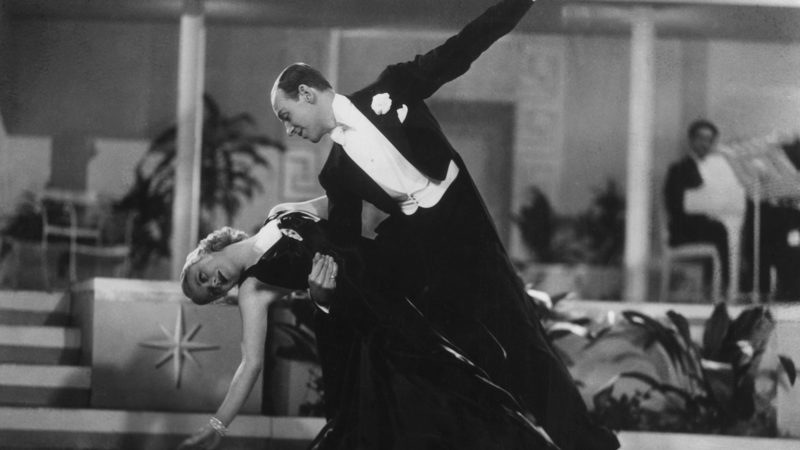
Roberta
American popular songs and movies of that era were more than the sum of their influences. Pioneer pop artists like Astaire and Rogers forged rhythms and movements with a mix of playfulness, energy, and drive that once seemed native to this country and made complex expressions of emotion feel straightforward. They built a tradition of devil-may-care and go-for-broke entertainment. They gave their all to romance and frivolity and in so doing made their fans want to get happier and step livelier. The electrifying moment in The Story of Vernon and Irene Castle comes when we see Astaire and Rogers trip the light fantastic across a huge map of the U.S. They attract fans from 32 cities, seen in miniaturized swarms that replicate in each metropolis until the entire country throbs and prances.
If Cary Grant remains our archetypal man of the world, Astaire is so lighter-than-air that he sometimes soars straight out of it. “The nearest approach we are ever likely to have to a human Mickey Mouse; he might have been drawn by Mr. Walt Disney, with his quick physical wit, his incredible agility,” Graham Greene wrote in The Spectator, during his film critic years. “He belongs to a fantasy world almost as free as Mickey’s from the law of gravity.” In Astaire solos like “Shoes with Wings” or “Since They Turned ‘Loch Lomond’ into Swing” in Carefree, he takes mundane settings—respectively, a cobbler’s shop and a putting green—and turns them into kinesis-charged imaginary realms. They impinge on our own realities only because Astaire, our breeziest fellow being, frolics his way through them with unerring strokes of a golf club or his tap shoes.
When Rogers has a solo song or dance, right up to “The Yam” in Carefree, she connects more directly to the id. In Flying Down to Rio, Rogers, as a singer in Gene Raymond’s band, belts out “Music Makes Me,” about music making her “do the things I never should do,” with brazenly funny inflections, in a clinging, semi-transparent dress that might have inspired Marilyn Monroe’s slinky crooning outfit in Some Like It Hot. In a reprise, the same music makes Astaire—the band’s accordionist and second-in-command—erupt into a solo that’s the genuine precursor to Steve Martin’s “happy feet.” Arms flailing, he gyrates through an astonishing array of near-trips and almost-stumbles in a free-form tap explosion detonated by rhythm alone. When Astaire does a virtuoso follow-up in the “No Strings” sequence of Top Hat, he calls it a “dance attack.”
The contrast between Rogers’s sensuality and Astaire’s almost abstract euphoria fueled Katharine Hepburn’s famous quote, “He gives her class, she gives him sex.” Yet their affinity goes beyond that. In Rio, they’re simply friends and band-mates; the bandleader (Gene Raymond) and the classy-sexy Rio society gal (Dolores Del Rio) carry the romance. But when Astaire and Rogers dance “the Carioca,” an up-tempo tango, they’re merrily symbiotic. The lyrics say, “Two heads together…are better than one” and prescribe, “two heads together…that’s how the dance is begun.” If ever two people complete each other on the dance floor forehead to forehead, it’s Astaire and Rogers in Rio. Iago is referring to sexual positions when he says that Othello and Desdemona “make the beast with two backs.” In Astaire and Rogers’s close turns here, they form a lithe and supple creature with one back. And it belongs to Rogers.
Rogers complained in her 1991 autobiography My Story that Sandrich, doting on Astaire at her expense, focused too much on her backbends. That’s where Astaire’s choreography often rivets our attention, too. From any angle, her elegant curves are what make her contrast so effectively with him. His pencil-thin physique etches complete lines of movement in the air. Something in the way she moves draws us to her torso. Even when she hitches her gown to free her feet, the gesture emphasizes her sinuous hips. They’re both blithe, lithe spirits, and their dual impact is elemental: she’s earth, he’s wind, and together, they’re on fire.
It’s an added pleasure today to observe how much a performer like Steve Martin and a choreographer like Twyla Tharp learned from Astaire and Rogers: sidling into their dances, then coming down off, on, in between, and around the beats. Just as influential are the team’s incomparably witty use of vaudeville routines in the rib-tickling “I’m Putting All My Eggs in One Basket” (Follow the Fleet), like getting stuck in a repetitive step or gamboling straight past the music.
No one else conveys emotion through movement the way they do, or makes the urge to dance seem so infectious. Even when we’re sitting still, they give us happy feet.
Fred & Ginger, a complete 10-film retrospective, begins Friday, July 13 at the Film Society of Lincoln Center.
Michael Sragow is a contributing editor to Film Comment and writes its Deep Focus column. He is a member of the National Society of Film Critics and the Los Angeles Film Critics Association, and a contributor to the Criterion Collection.



